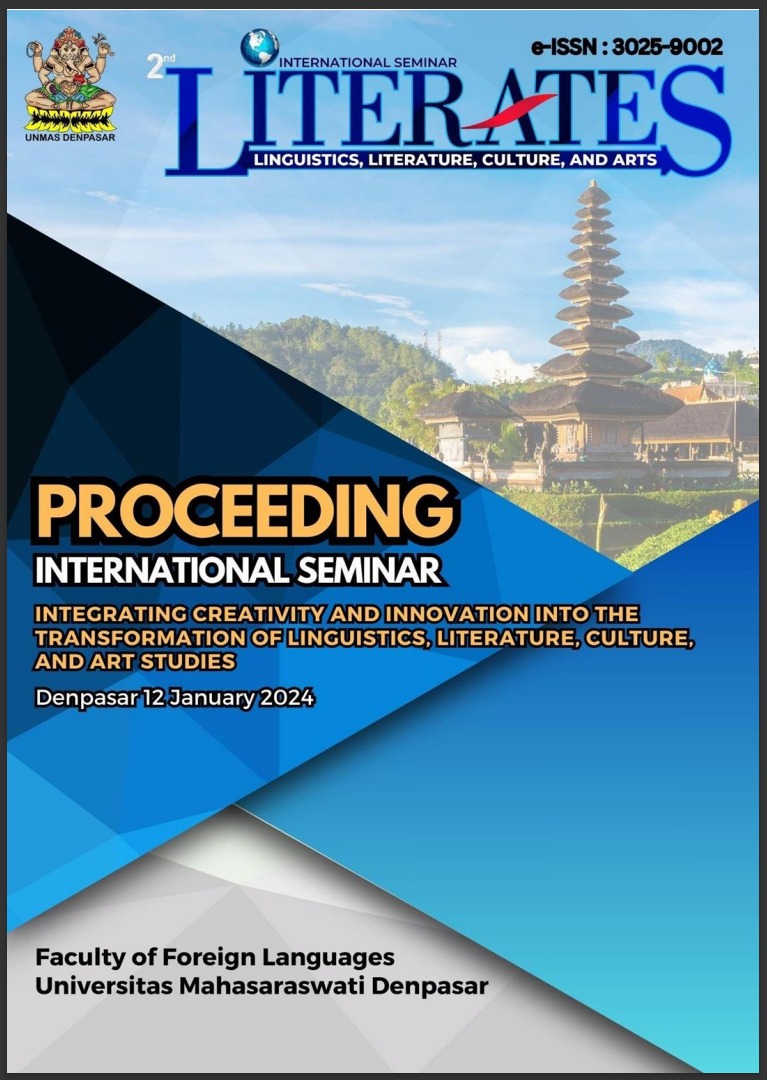AN ANALYSIS OF CNN NEWS ARTICLE: A LEXICAL COHESION
Keywords:
Keywords –lexical cohesion, news, repetition, synonymy, antonymyAbstract
This study investigates the lexical cohesion found in a CNN News, “What’s Next in the Search for the Imploded Submersible?” As a research design, descriptive qualitative method was applied to explore how lexical items were utilized in a news article so that readers areinterested in making up a deeper understanding on the content of the news. The lexical items were connected to each other in making the article worth reading. The analysis was made in accordance with Paltrigde’s (2000) that was applied through several steps to gain the validity of the present study. The analysis includes several stages, namely selecting, classifying, describing the data descriptively, and analyzing them comprehensively. This study found that four kindsof lexical cohesion in CNN news are synonymy, repetition, antonymy, hyponymy, and meronymy. Repetition consists of 30data (71.3%), synonymy consists of 5data (11.9%), antonymy consists of5data (11.9%), and meronymy consists of2data (4.9%). Therefore, the most frequently use of lexical cohesion is repetition, and the lowest occurrence in the data is hyponymy. The investigation of lexical cohesion in a news article can enhance the understanding of how different types of text construct its own style including the utilization of lexical items in newswriting.






